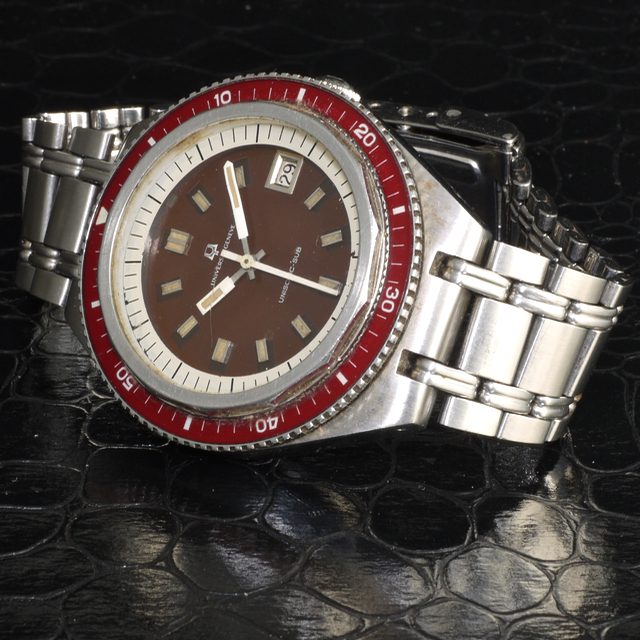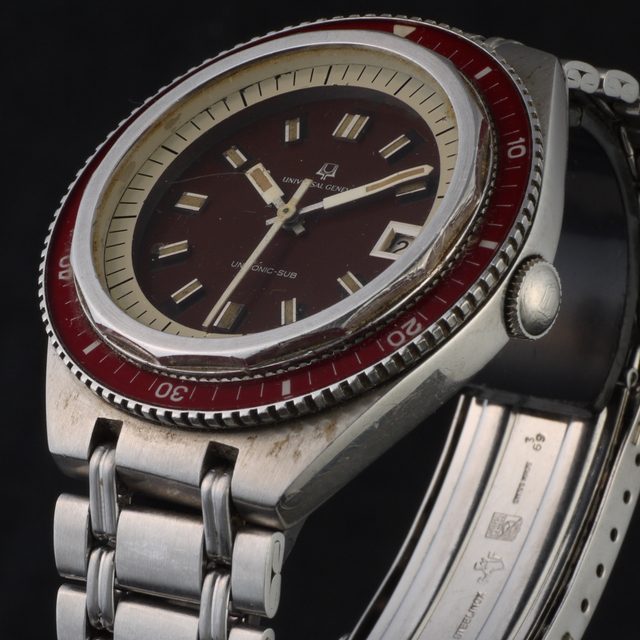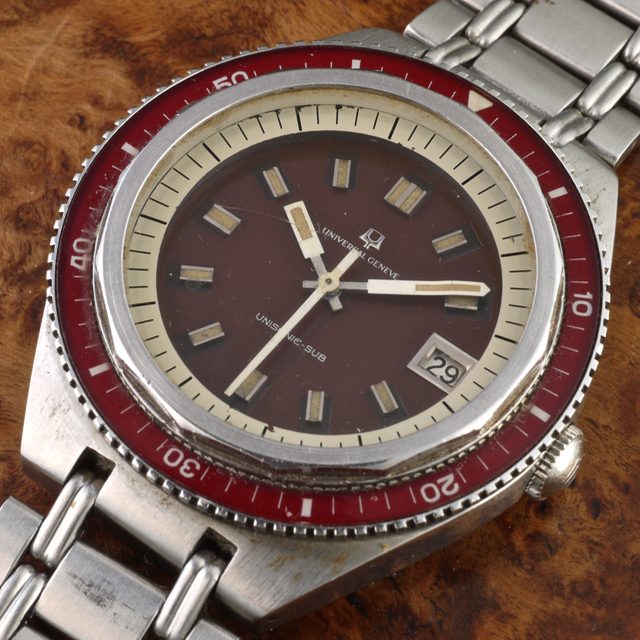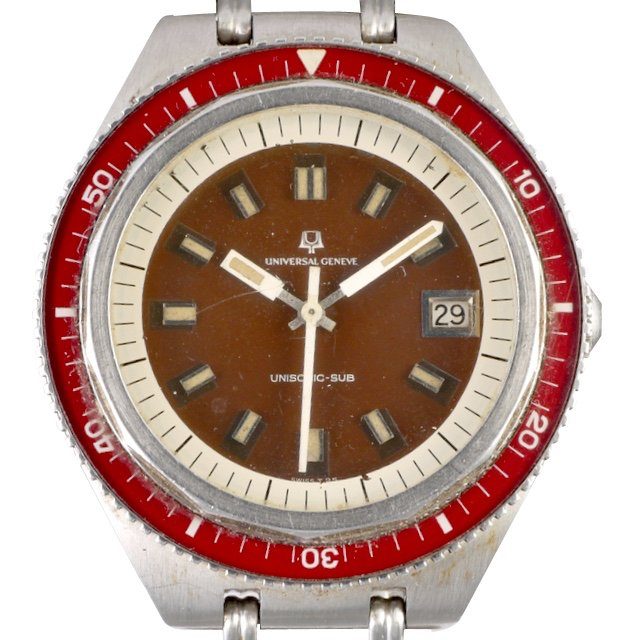



Universal Unisonic-Sub
The scanning electron microscope is developed1969 Universal Unisonic-Sub ref. 852105, 49.2 x 43.6mm. integrated bracelet, it is one of the few divers with a Bulova tuning fork movement.
The tuning fork movement is called the Universal cal. 52 but is actually a Bulova Accutron 218D movement. Many parts were finished by Universal to higher standards but parts are interchangeable with standard 218 parts! Universal went so far as to design a special logo for the Unisonic range, a combination of the Accutron and UG logo, as seen on the dial and bracelet.
The first ever specialized diving watches were the Panerai, used by the Italian frogmen in the Second World War. Actually they were Rolex 3646s with special dials made by Panerai.
Right after WWII, two French combat diving corps started to search for a military grade diving watch, big and easy to read underwater, hermetically sealed and capable to absorb shocks – this helped Blancpain to develop the legendary Fifty Fathoms introduced in 1953. The transformation of the simple water resistant watch to the tool diver watch happened at that exact point. The next year Rolex launched perhaps the most famous diver watch of them all, the Rolex Submariner; from that point most of the Swiss companies started to shift their attention towards the sea, trying to produce reliable underwater-capable wristwatches.
Founded in 1894 Universal watches are highly disputed among collectors especially for their classic chronographs.
Shortly before the beginning of World War II Universal seized an opportunity to create two wristwatch models: the Compur (in 1933) and the Aero-Compax (in 1936).
In 1941 Universal inaugurates a new ultra-modern production site, built within less than six months to make the new Aero-Compax chronometer for pilot’s along with other chronometer models, three years later the Universal Tri-Compax was introduced at Basel Watch Fair for the company’s 50th anniversary.
Universal also collaborated with the French fashion brand Hermes and designed a series of chronographs named Pour Hermes. Incidentally, Hermes was responsible for being the major sales hub for Universal in Europe until the 1950s. Twenty years later, the company was one of the few to introduce the quartz movement, which led to automatic watches.
The most notable changes occurred to the 60’s Compax, with the use of a water-resistant-type case with screw back cases, as opposed to the early models with snap on case backs. These water-resistant cases had round pushers (early models had square-shaped pushers).
